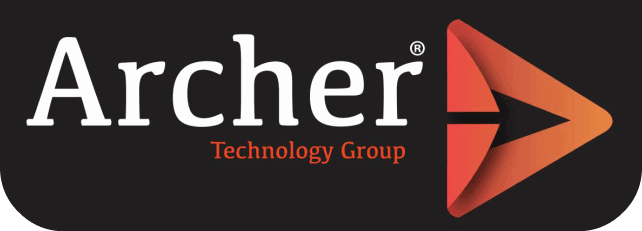Maximizing Efficiency with Fixed Assets Software
In the realm of asset management, fixed assets software plays a pivotal role in enhancing the efficiency and accuracy of business operations. From managing depreciation schedules to streamlining compliance reporting, fixed assets software is indispensable for companies aiming to optimize their asset lifecycle management. This comprehensive guide explores the multifaceted benefits, features, and implementation strategies of fixed assets software, helping your business stay ahead in a competitive market.
Understanding Fixed Assets Software
Fixed assets software is a specialized tool designed to help businesses track and manage their tangible assets. These include property, plant, and equipment that are used in the production of goods or services. Managing these assets manually can be time-consuming and prone to errors, especially as businesses grow and the number of assets increases. Fixed assets software automates this process, providing a centralized platform for tracking asset locations, maintenance schedules, and financial information.
Key Features of Fixed Assets Software
- Automated Depreciation Calculation: One of the most significant advantages of fixed assets software is its ability to automatically calculate depreciation. This feature ensures that depreciation expenses are accurately recorded in financial statements, reducing the risk of errors and non-compliance. The software supports various depreciation methods, such as straight-line, declining balance, and sum-of-the-years’ digits, allowing businesses to choose the one that best suits their needs.
- Comprehensive Asset Tracking: Fixed assets software provides real-time tracking of asset locations, conditions, and usage. This feature is particularly useful for companies with multiple locations or a large number of assets. By maintaining accurate records, businesses can avoid unnecessary purchases, optimize asset utilization, and reduce the risk of asset theft or loss.
- Maintenance Management: Proper maintenance is crucial for extending the lifespan of fixed assets. Fixed assets software includes maintenance management features that allow businesses to schedule regular inspections, track maintenance costs, and generate work orders. This proactive approach to maintenance helps prevent unexpected downtime and costly repairs.
- Compliance Reporting: Compliance with local and international accounting standards is essential for businesses operating in regulated industries. Fixed assets software simplifies compliance reporting by generating accurate and up-to-date financial reports, including balance sheets, income statements, and cash flow statements. The software also helps businesses stay compliant with tax regulations by automatically calculating and recording asset-related taxes.
- Asset Disposal Management: When assets reach the end of their useful life, businesses need to dispose of them properly to avoid legal and financial repercussions. Fixed assets software streamlines the asset disposal process by generating disposal reports, calculating gains or losses, and updating financial records accordingly. This feature ensures that businesses can manage asset disposals efficiently and in compliance with relevant regulations.
Benefits of Implementing Fixed Assets Software
Increased Accuracy and Efficiency
Manual asset management processes are prone to errors, especially when dealing with large volumes of data. Fixed assets software eliminates the risk of human error by automating key processes, such as depreciation calculation and compliance reporting. This automation not only increases the accuracy of financial records but also frees up valuable time for finance teams to focus on strategic tasks.
Enhanced Decision-Making
Fixed assets software provides businesses with real-time data on asset performance, maintenance costs, and depreciation schedules. This information is crucial for making informed decisions about asset purchases, disposals, and replacements. By having a clear overview of their asset portfolio, businesses can make decisions that optimize asset utilization and minimize costs.
Improved Compliance
Compliance with accounting standards and tax regulations is a critical concern for businesses of all sizes. Fixed assets software simplifies compliance by automatically generating accurate financial reports and tax calculations. This feature reduces the risk of non-compliance and the associated penalties, giving businesses peace of mind.
Cost Savings
By providing a comprehensive view of asset performance and maintenance needs, fixed assets software helps businesses avoid unnecessary expenditures. For example, by tracking maintenance schedules and costs, businesses can identify assets that are no longer cost-effective to maintain and make informed decisions about replacements. Additionally, accurate depreciation calculations help businesses avoid overpaying on taxes, resulting in significant cost savings over time.
How to Choose the Right Fixed Assets Software
Assess Your Business Needs
Before selecting fixed assets software, it’s essential to assess your business’s specific needs. Consider the size of your asset portfolio, the complexity of your depreciation calculations, and your compliance requirements. Understanding these factors will help you choose software that meets your business’s unique needs.
Evaluate Software Features
Different fixed assets software solutions offer various features, so it’s essential to evaluate the features of each option. Look for software that provides comprehensive asset tracking, automated depreciation calculation, and compliance reporting. Additionally, consider whether the software offers features such as maintenance management and asset disposal management, which can add significant value to your business.
Consider Ease of Use
The ease of use is a critical factor when choosing fixed assets software. The software should have an intuitive interface that allows your team to quickly and easily perform asset management tasks. Look for software that offers training and support resources to help your team get up to speed quickly.
Check Integration Capabilities
Your fixed assets software should integrate seamlessly with your existing accounting and enterprise resource planning (ERP) systems. Integration capabilities are crucial for ensuring that data flows smoothly between different systems, reducing the risk of errors and duplications.
Review Vendor Reputation
Finally, it’s essential to choose a software vendor with a solid reputation in the industry. Look for vendors with a proven track record of delivering high-quality software solutions and providing excellent customer support. Reading customer reviews and seeking recommendations from industry peers can help you make an informed decision.
Conclusion
Fixed assets software is a powerful tool that can help businesses manage their assets more efficiently, reduce costs, and ensure compliance with accounting standards and tax regulations. By automating key processes and providing real-time data on asset performance, fixed assets software empowers businesses to make informed decisions that drive success.
.

